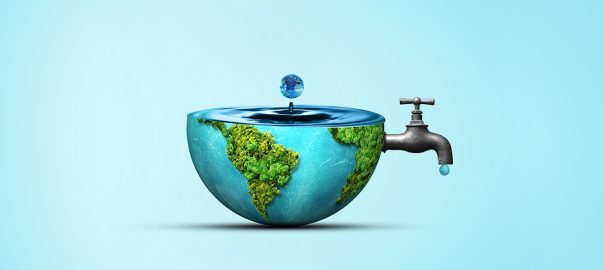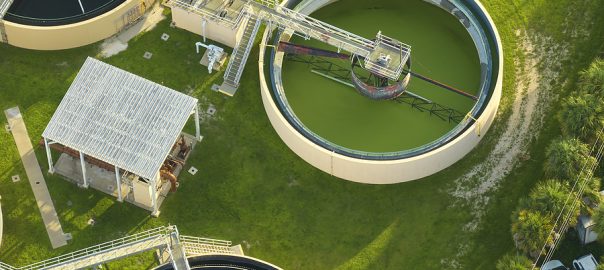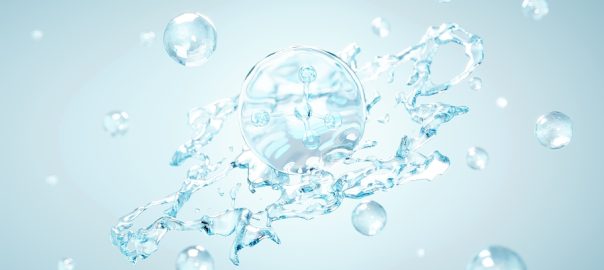
It’s no surprise that industrial enterprises use an awful lot of water. What may surprise people is that industrial water withdrawals were estimated to be around 14.8 billion gallons of water per day in 2015. Around 82% of that water withdrawal came from surface water.
Even with snowfall and flooding in areas like California and Utah, there is still a severe shortage of water across the U.S. Industries need to do their part to minimize water use in their facilities. There’s never been a better time to address this after news came out in November 2022 that a Saudi Arabian firm had been pumping unlimited amounts of groundwater from Arizona’s Butler Valley for just $25 per acre each year. The water is used to grow alfalfa for cattle being raised in Saudi Arabia.
Is your plant taking the necessary precautions to conserve water? Are you making sure your industrial wastewater isn’t causing issues locally? If you make a mistake, it can be costly. One beverage company was fined $5 million for sending arsenic-rich industrial wastewater to a wastewater treatment plant that was not permitted to treat that level of hazardous waste. You have to put thought into your water usage and what happens to your industrial wastewater.
Lakeside Equipment has some tips for minimizing water use in your plant and making sure the wastewater you generate isn’t going to cause problems down the road.
Upgrade to Equipment That Uses Less Water
Depending on your industry, you may have equipment that requires water for things like cooling cabling that’s just been coated with insulating plastic or vinyl coatings. You might have industrial washing machines or dishwashers. Look into upgrading equipment with models that use less water and electricity. If your equipment is 20 years old, it’s more likely to use far more water and electricity than newer machines will, and that lowers excessive use of water.
What kind of AC system does your facility use? Cooling towers in labs can be wasteful if the settings aren’t adjusted to keep the cycle of concentration as low as possible. If you have a single-pass cooling system where water is passed once through a cycle before being drained and refilled, look into recirculating chilled water systems.
If an air conditioner doesn’t need to be running 24/7, set it on a timer to ensure it gets turned off when a lab or office is empty.
Install a Small Water Treatment Plant
As technology advances, it’s getting easy to add a wastewater treatment plant within your hotel, school, or industrial setting. Water that’s used to wash sheets and towels from hotel rooms can be recycled and used over and over, which reduces the amount of water you take from the area’s water district.
Work with a professional in water treatment equipment to find ways to collect your facility’s gray water, screen it, filter it, and reuse it to fill the backs of toilets, water gardens, or reuse in washing machines. Watch reverse osmosis systems carefully as they can use more water than other filtration systems.
Pre-Treat Facility Wastewater to Lessen the Contaminants Going to the Sewers
In some areas, restaurants are not allowed to operate without a grease trap capturing fats, oils, grease (FOG), and food particles before the wastewater goes to sewer pipe outlets. Your facility could invest in a self-contained screening and grit removal unit that treats wastewater to clear out grit, FOG, and other contaminants that can clog pipes. If you invest in this pre-treatment equipment, you lower the risk of unexpected fines, and it helps the wastewater treatment plant avoid back-ups that create pollution and raw sewage releases.
Don’t Use City Water to Water Gardens or Fill Fountains
If your facility has gardens for curb appeal or to grow items like produce and herbs for your commercial kitchen, save rainwater in barrels, cisterns, or manmade ponds and use that. You could direct rainwater to a pond or barrels and use a pump system or gravity to bring the water through hoses to gardens for your watering needs.
Does your landscaping team use sprinklers to keep lawns watered? You lose water to evaporation. Try drip irrigation instead. Or, switch your landscaping to plants that require very little moisture and eliminate the need for watering at all.
Rainwater is also great for refilling water features in or outside your building. If you have a water fountain within your lobby, you can use rainwater to fill it. Add a pool bleach tab if you’re worried about sanitization.
Repair Leaks ASAP
When you notice a leaking toilet, sink, or pipe, have it fixed ASAP. Even a small leak can lead to a lot of wasted water over a week. If one faucet is dripping one drip every second, by the end of the day, more than five gallons of water have been lost.
As you fix leaks and replace fixtures, switch to low-flow bathroom fixtures and faucets. Low-flow toilets use no more than 1.28 gallons per flush, which is almost one-fifth of the water that older 5-gallon toilets use.
Enlighten Your Employees
As you make changes, make sure your employees are aware. They may have noticed something that you’ve missed or have additional suggestions. You could reward employees who have water conservation tips or ideas.
Often, your employees will see more and experience more than you do as they’re on the factory floor or industrial kitchen each day. You might learn that the water from blanching vegetables for freezing is going down a floor drain, but an employee feels it could be reused. Imagine the water your food processing plant could save if you took that water and used it in another department that makes your company’s packaged stock or bone broth.
While you talk with your employees, it’s a good idea to come up with corporate policies that address water conservation. Having it in writing helps everyone understand their role.
Ask an Expert in Water Treatment For Additional Tips
It’s so important for industrial plants to minimize their plant’s water use. With our tips, you can reduce your water consumption and reduce how much time has to be spent cleaning your industrial wastewater by local treatment plants. The faster water is properly cleaned and returned to watersheds, the better it is for the nation.
Lakeside Equipment has the expertise you need to help you establish a water treatment plant within your facility. Reuse as much water as you can and lower the demand you draw on city resources. Not only will it cut your water bills and protect you from fines for releasing heavily polluted water to the local wastewater treatment facility, but it also helps protect area residents from water shortages. Reach Lakeside Equipment’s sales team to learn more about industrial water treatment options.






